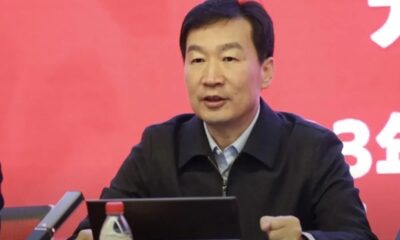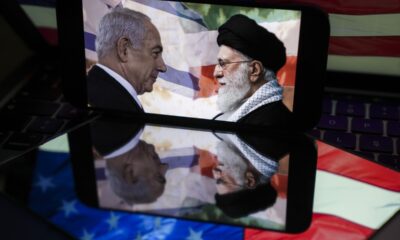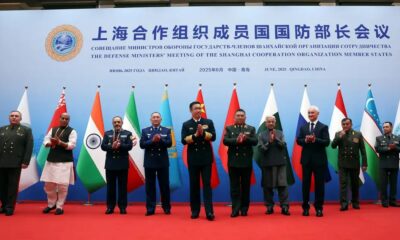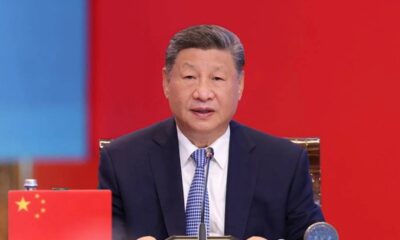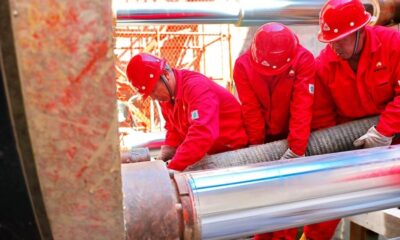America
Chip giant TSMC and the US agree to make advanced products in Arizona
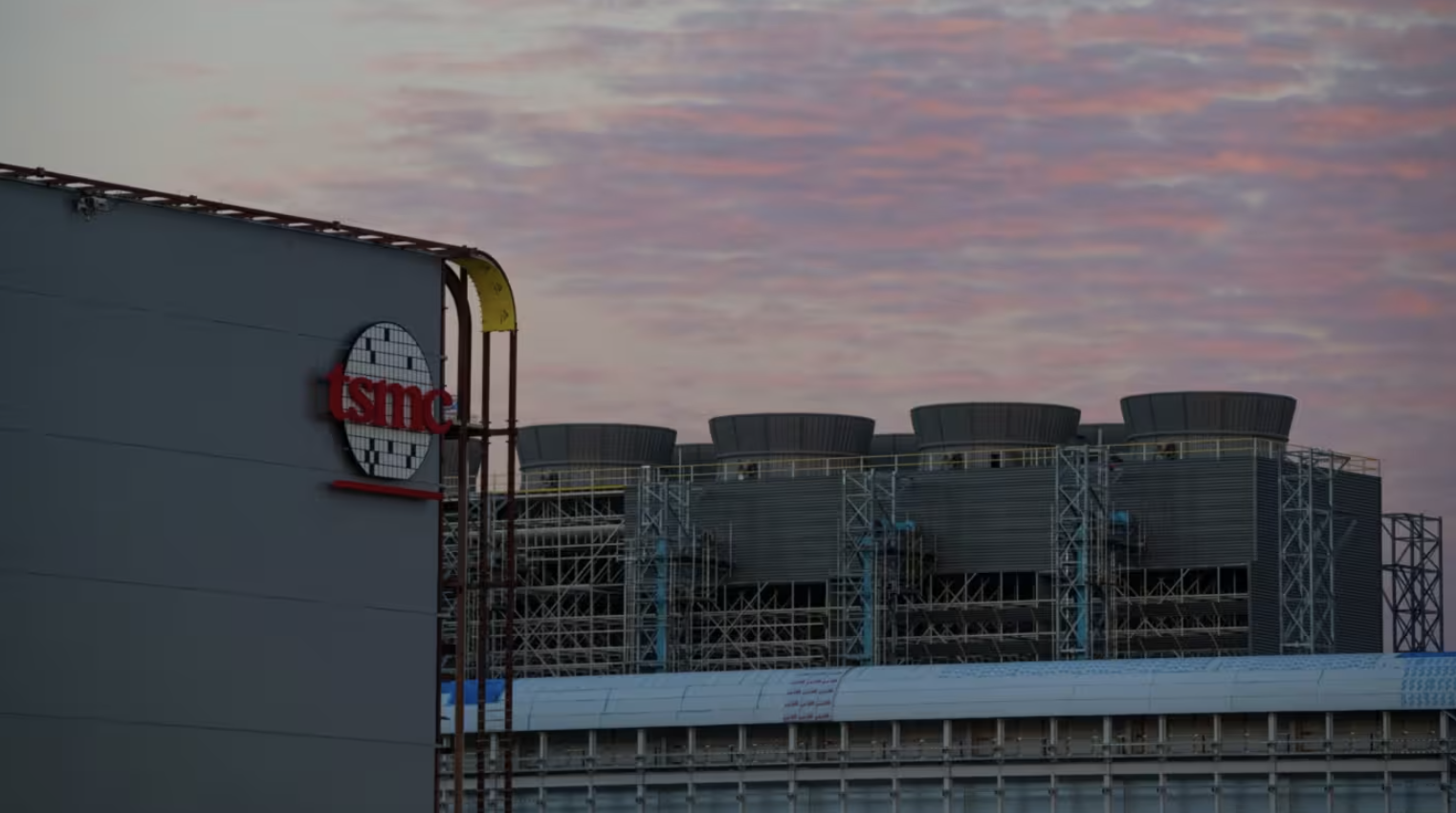
Taiwan Semiconductor Manufacturing Co (TSMC), the world’s largest chipmaker, has agreed to manufacture its most advanced products in Arizona starting in 2028, supporting the Biden administration’s efforts to bring the semiconductor supply chain home.
TSMC will produce state-of-the-art 2-nanometre chips at its second Phoenix fab.
The company will also increase its investment in the US from $40 billion to $65 billion and build a third fab with 2nm or more advanced technology to be operational by 2030.
The Taiwanese company and the US Department of Commerce announced on Monday that Washington will provide the company with $6.6 billion in grants and up to $5 billion in loans.
The grants are part of the Chip Act, which was passed in 2022 to revive US industry. Last month, the Biden administration announced an $8.5 billion grant and up to $11 billion loan agreement for Intel, which has pledged $100 billion in new investment.
TSMC’s commitment helps the White House meet its goal of moving 20 per cent of the world’s advanced semiconductor production onshore by 2030. About 90 per cent of advanced chips are currently made in Taiwan.
US Secretary of Commerce Gina Raimondo said: “TSMC is expanding its manufacturing capacity in Arizona so that, for the first time, we will produce the world’s most advanced semiconductor chips right here in the United States. We are significantly strengthening our national security position,” Raimondo said.
The deal means some of the most advanced chips used in artificial intelligence could be made in the US by the end of the decade, rather than chipmakers such as Nvidia and AMD having to rely on production in Asia.
“Our US operations enable us to better support our US customers, which include many of the world’s leading technology companies,” said Mark Liu, president of TSMC.
TSMC had previously planned to operate its US factories using manufacturing technology that was a generation older than the most advanced technology used in mass production in Taiwan. The first Arizona plant was to begin 4nm production next year, and the second would introduce 3nm two or three years later.
But most AI chips will run on 3nm from next year or 2026.
By the time TSMC’s second Arizona fab opens, Nvidia and other AI chipmakers will have moved to 2nm, an engineer familiar with the process told the FT. That’s why TSMC’s original plan for this fab to run at 3nm “didn’t make sense”, a company executive said.
Raimondo said: “The chips that TSMC makes … are the foundation of all AI. It takes tens of thousands of precursor chips to train a single precursor AI model, and now, thanks to this agreement, those chips will be made in the US,” Raimondo said.
America
US intelligence officials claim Iran’s nuclear facilities were destroyed
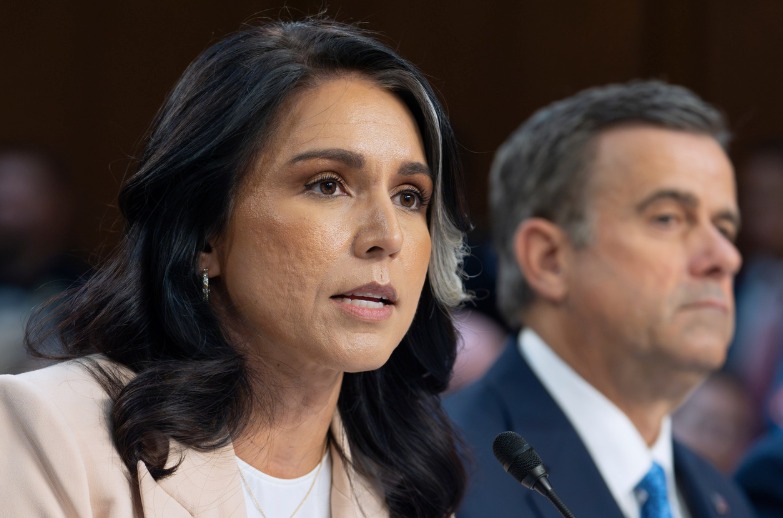
Two of President Donald Trump’s top intelligence officials claimed that new intelligence indicates Iran’s nuclear facilities were “destroyed” in US airstrikes over the weekend.
CIA Director John Ratcliffe and Director of National Intelligence (DNI) Tulsi Gabbard issued their statements hours apart, reinforcing the administration’s day-long effort to counter media reports of an initial government assessment that the strikes did not significantly set back Iran’s nuclear program.
“New intelligence confirms what @POTUS [the US President] has stated repeatedly: Iran’s nuclear facilities have been destroyed,” Gabbard announced on X.
Ratcliffe shared an image of his own statement on social media about two hours later. “Credible intelligence sources indicate that Iran’s nuclear program has been severely damaged in the recent attacks,” Ratcliffe’s statement read.
The CIA chief asserted that this information included “new intelligence from a historically reliable and accurate source/method,” indicating that several key Iranian nuclear facilities were destroyed and would take years to rebuild.
Ratcliffe added that the agency continues to gather “information from reliable sources” on the matter.
Neither Gabbard nor Ratcliffe provided further details about the intelligence or when it was obtained. However, DNI spokesperson Olivia Coleman later confirmed that the intelligence Gabbard mentioned was from US sources.
A former CIA analyst, speaking to POLITICO, described it as “highly unusual” for the agency’s director to release an analytical assessment in a press statement.
However, this individual, who spoke on the condition of anonymity to discuss sensitive intelligence processes, said it was unlikely the statement disclosed any sources or methods.
The Defense Intelligence Agency’s (DIA) earlier assessment was reported on Tuesday by CNN and other media outlets. It stated that the strikes had not destroyed essential components of the country’s nuclear program and had likely only delayed it by a few months.
On Wednesday, the DIA emphasized that its findings were not conclusive.
“This is a preliminary and low-confidence assessment, not a definitive conclusion,” the DIA said in a statement. “The assessment will become clearer as additional intelligence is obtained. We have not yet been able to inspect the physical facilities, which will provide us with the best indication.”
The leak of the DIA’s assessment infuriated Trump. On Wednesday, he posted an angry message targeting one of the CNN reporters who wrote the initial story, reiterating his claim that Iran’s nuclear facilities were “destroyed.”
Gabbard also criticized the “propaganda media” in her post.
During a nearly hour-long press conference at the NATO summit in the Netherlands on Wednesday, Secretary of State Marco Rubio and Secretary of Defense Pete Hegseth, standing alongside Trump, took turns angrily refuting the findings of the DIA report and the media’s coverage of it.
“Those who say the bombs were not destructive are just trying to undermine the president and the successful mission,” Hegseth charged at one point. The Secretary of Defense also told reporters that the Pentagon and the FBI were investigating how the classified report was leaked.
Israeli officials also defended Trump. On Wednesday, the Israeli Prime Minister’s Office released a statement from the Israel Atomic Energy Commission, which claimed that the combined effect of US and Israeli strikes had “set back Iran’s ability to develop nuclear weapons by years.”
Daniel Shapiro, who served as the deputy assistant secretary of defense for the Middle East during the Biden administration, cautioned against placing too much confidence in initial assessments.
“It is highly likely that these facilities have been seriously damaged, but we must wait for the data and actual information,” Shapiro said. He estimated that it would normally take the intelligence community several weeks to reach a definitive conclusion about the impact of such an attack.
In a post on Truth Social on Wednesday evening, Trump hinted that the administration might soon share more information about the damage caused by the strikes.
Trump announced that Pentagon chief Hegseth would hold an “interesting and undeniable” press conference today (June 26).
America
Pentagon divided over military priorities in Asia and the Middle East
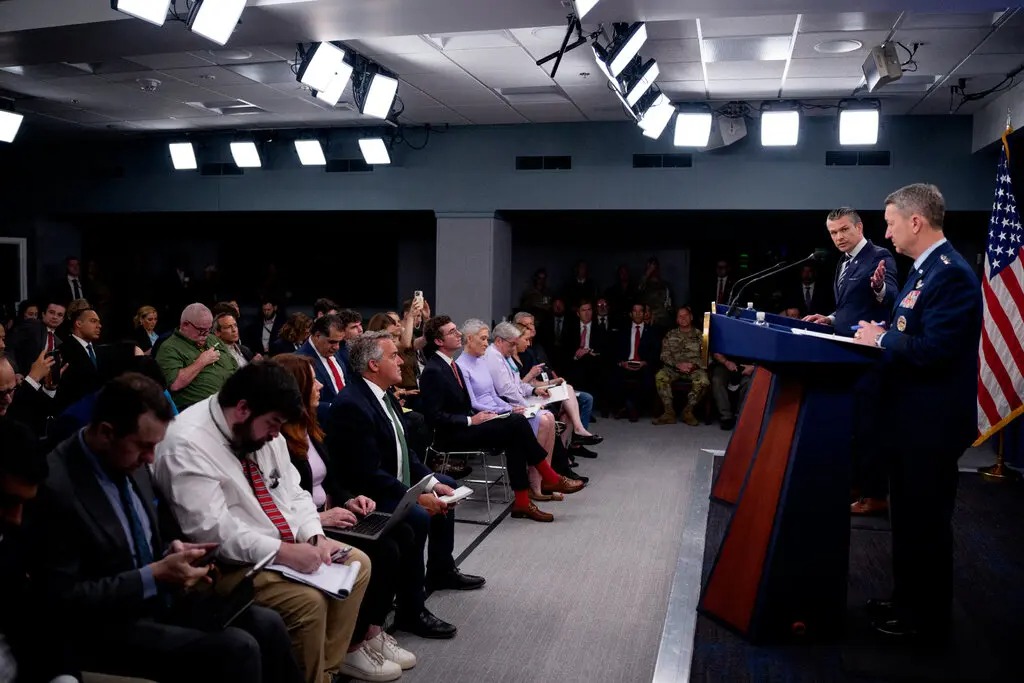
Senior Pentagon officials are reportedly divided over the extent of military support for Israel versus engagement in Asia, a split that could influence the direction of foreign policy in a potential second term for Donald Trump.
Ben Smith, founder of the news site Semafor, explored this issue in a recent special report. According to Smith, General Michael “Erik” Kurilla, the commander of US Central Command (CENTCOM), is advocating for more resources to defend Israel as retaliatory actions from Iran increase.
In contrast, Elbridge Colby, the Under Secretary of Defense for Policy and a proponent of the US military focusing on China and the Indo-Pacific, opposes the diversion of American military assets from Asia to the Middle East.
An Iran war embodies the primary tension for Colby and his allies: the US has long sought to implement its “pivot to Asia,” a strategy first announced by Barack Obama in 2011. However, practical demands and political pressures consistently redirect American military involvement back to the Middle East.
Shifting priorities within the Pentagon
According to Smith, Colby’s opposition stems from concerns that deployments, such as the transfer of a Patriot missile battery from South Korea to the Middle East in April, could compromise US readiness for future conflicts with China or the Democratic People’s Republic of Korea.
Despite providing military aid to Israel, Trump has occasionally shown frustration with open coordination and allegedly dismissed his National Security Advisor, Mike Waltz, due to his close ties with Israeli Prime Minister Benjamin Netanyahu.
Trump’s potential appointment of Colby to a Department of Defense position has raised concerns among pro-Israel hawks, who might interpret it as a sign of diminishing US support.
Although Waltz’s dismissal and Trump’s allowance for an “independent” Israeli strike on Iran suggest a more non-interventionist approach, Colby’s influence appears to be waning.
CENTCOM chief Kurilla gains strength
Secretary of Defense Pete Hegseth reportedly dismissed several of Colby’s allies in April and has cultivated a closer relationship with Kurilla.
Eli Lake of The Free Press reported that the new Deputy Assistant Secretary of Defense for the Middle East, Michael Dimino, who is from the “restrainer” camp, has set off alarm bells among Trump supporters who believe engagement in the region is vital.
Referring to Dimino’s views, one Trump ally joked, “The guy who is going to be his deputy in charge of Middle East policy thinks the US shouldn’t be in the Middle East. Somebody call Elon at DOGE.”
Earlier this month, Al-Monitor reported that Kurilla had requested the deployment of a second aircraft carrier strike group to the region. While the Pentagon has not confirmed this deployment, the US has begun sending warships and aircraft to the area. The planned visit of the USS Nimitz to Vietnam was abruptly canceled due to “urgent operational requirements.”
The future of American policy
A key force behind the “restrainer” ideology is Defense Priorities, a think tank funded by Charles Koch’s Stand Together philanthropy group.
The organization recently published a carefully worded paper arguing for reducing Israel’s reliance on US military guarantees: “A more secure, diplomatically connected Israel would rely less on American military backing and more on regional partnerships to secure its future.”
Colby and the Pentagon press office did not respond to media inquiries, but internal dynamics suggest that those who favor traditional US intervention in the Middle East are gaining an advantage.
According to Smith, as Trump attempts to balance his “America First” policy with regional alliances, the outcome of this internal debate will determine the trajectory of US-Israel relations during a period of regional instability.
Elbridge Colby’s fixation on China
One claim in the report suggests that Colby is so focused on Asia that he “clashes with anyone doing anything else in foreign policy, including loyal Trump supporters.”
After Smith’s report was published, chief Pentagon spokesperson Sean Parnell stated in an email that reports of any internal division were inaccurate and that Colby was “fully aligned with the leadership team and moving in lockstep.”
In an interview with POLITICO last July, Colby emphasized his personal view that defending Eastern NATO requires allocating forces in a way that does not diminish the US’s ability to defend Taiwan.
Colby also identified “key capabilities” such as long-range fire, logistics, command and control (known as C4ISR), and air defense as areas where the US should focus on Asia, not Europe.
Having previously argued that US commitments to Ukraine were excessive, Colby has consistently underlined that the most tangible economic and military challenge to his country and its interests comes from China.
The strategist, who noted that he views Ukraine through a “China lens,” clarified that he was not calling for an immediate halt to all aid to Kyiv. He argued that while Russia’s actions are “evil,” the assistance provided by the US does not align with the tangible interests of Americans.
When asked what he would advise the US President to do now, Colby responded: “I would say, ‘I don’t want to talk about Ukraine right now. We are going to talk about Taiwan, China, and Asia first, and after we have addressed that problem satisfactorily, then we will spend time, political capital, and resources on Ukraine.'”
Last month, the Financial Times (FT) reported that Colby had told British officials a Trump administration would expect the British military to increase its focus on the Euro-Atlantic region.
America
Israel’s nuclear arsenal used as a tool of blackmail, says expert
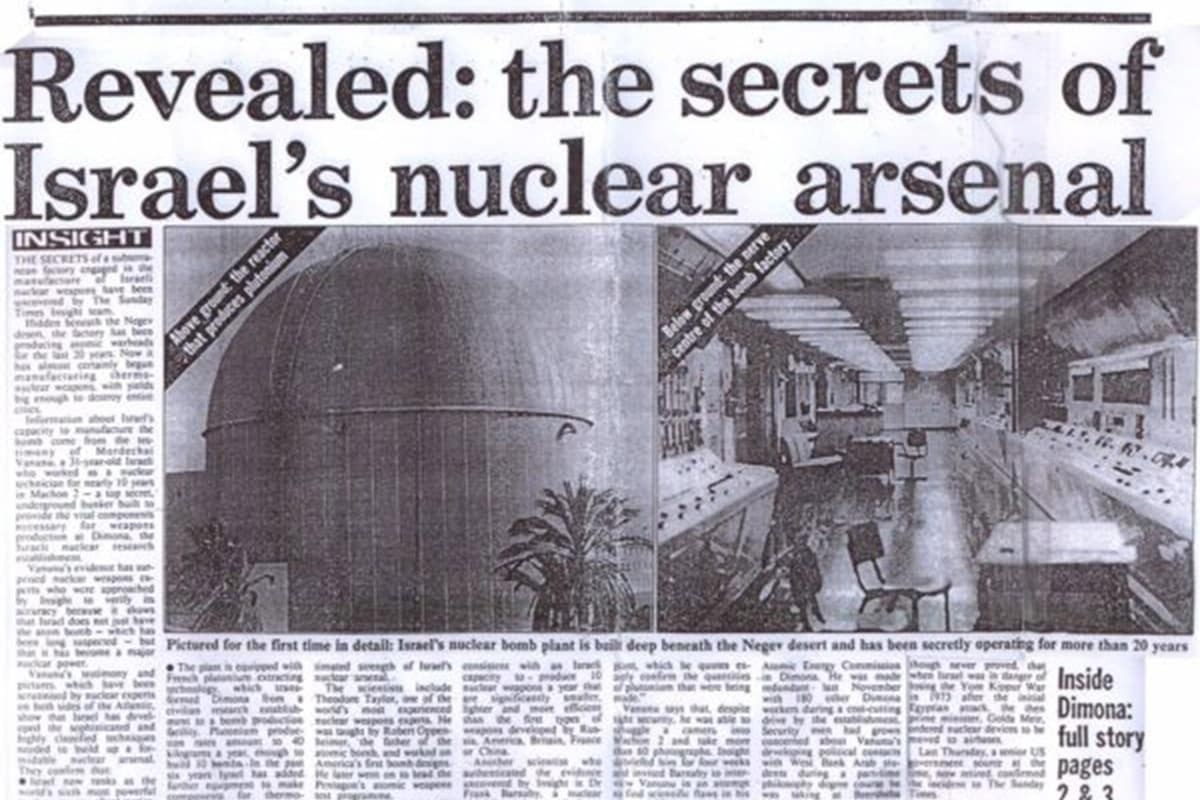
John Steinbach of the Hiroshima Nagasaki Peace Committee detailed the hidden aspects of Israel’s secret nuclear program during a panel hosted by the Schiller Institute. Steinbach asserted that Israel’s nuclear arsenal is not merely a defensive tool but a mechanism of blackmail, primarily used to coerce other nations, particularly the US, into adopting its preferred policies.
John Steinbach of the Hiroshima Nagasaki Peace Committee of the National Capital Area detailed the history and current status of Israel’s clandestine nuclear weapons program at an online panel organized by the Schiller Institute titled True Citizens of Every Nation Demand Peace.
Steinbach emphasized that Israel’s nuclear arsenal extends beyond the “Samson Option”—a doctrine aimed at global destruction if Israel’s existence is threatened. He described it as an active tool of blackmail used to compel other nations, particularly the US, to act in line with Israeli interests.
Steinbach stated that Israel currently possesses between 100 and 500 advanced thermonuclear and neutron bombs. He also noted that Israel has a sophisticated delivery system, including Jericho 1, 2, and 3 ballistic missiles capable of reaching the US east coast and beyond Moscow, as well as at least six nuclear-capable Dolphin-class submarines supplied by Germany.
‘The real goal is to coerce the US’
Citing author Israel Shahak, Steinbach explained that the primary goal of Israel’s nuclear program is to “freeze the status quo in Israel’s favor,” a policy specifically targeting the US.
Steinbach quoted Francis Perrin, the former director of France’s nuclear program, who said, “We thought the Israeli program was aimed at making the Americans do what they wanted.”
Steinbach noted that this coercive policy was first blatantly applied during the 1973 war. “The Israelis threatened to use nuclear weapons unless the US carried out a massive airlift,” he said. “Kissinger and Nixon reluctantly complied, the airlift took place, and the world was put on nuclear alert.”
Nuclear program origins and French collaboration
Steinbach explained that the foundations of Israel’s nuclear program were laid by David Ben-Gurion with the vision that the Holocaust should never be repeated. A young deputy minister, Shimon Peres, was appointed to lead the program, with Ernst Bergmann serving as its scientific head.
The program gained significant momentum in the mid-1950s with a research reactor acquired from the US, and Steinbach highlighted the collaboration with France that began during the same period.
“Israel was a full partner in the French program. We must understand that the Algerian tests in the 1950s and early ’60s were actually joint Israeli-French tests,” Steinbach assessed. He added that France also assisted in the construction of the Dimona reactor, knowing it was a plutonium production facility despite being publicly presented as a civilian research reactor.
The mock facility that deceived Kennedy
Steinbach mentioned that US Presidents Eisenhower and Kennedy were strongly opposed to Israel acquiring nuclear weapons and were highly suspicious of the program. He described the deception Israel employed when Kennedy demanded an inspection:
“Israel took extreme measures. When the inspectors arrived, everything they saw was a complete sham. They were never shown the real parts of the Dimona complex; they were shown a mock-up. The inspectors went back and reported that the facility was for civilian purposes.”
Steinbach added that Kennedy was determined to stop the program but was assassinated shortly thereafter.
US presidents ignore intelligence reports on Iran, says ex-CIA analyst
Vanunu’s revelations changed the game
Steinbach emphasized that while Israel pursued a policy of “nuclear ambiguity” for years, everything changed when Mordecai Vanunu, a technician at Dimona, leaked photographs and documents to the Sunday London Times. The conclusions reached by Manhattan Project bomb designers Frank Barnaby and Ted Taylor, who reviewed the documents, were shocking.
“They estimated at the time that Israel possessed nearly 200 nuclear weapons,” Steinbach said. “More importantly, they determined that Israel had not only atomic bombs but also hydrogen bombs and miniaturized nuclear weapons that could be easily paired with warheads. This was a massive failure for the intelligence community.”
Steinbach also mentioned that joint nuclear tests were conducted with South Africa, that most of the uranium for the program was sourced from South Africa, that yellowcake uranium was supplied by Germany, and that there is strong evidence of enriched uranium being smuggled from the Numec facility in Pennsylvania, US.
‘IAEA has become a nest of spies’
In his concluding remarks, Steinbach sharply criticized the International Atomic Energy Agency (IAEA), arguing that the organization has been “hollowed out and become a nest of spies.”
“This situation has fatally undermined the credibility of the IAEA, the Treaty on the Non-Proliferation of Nuclear Weapons (NPT), and the United Nations,” he stated.
Steinbach claimed that Egyptian diplomat Mohamed ElBaradei was an honest IAEA director, but the US deliberately had him removed, transforming the agency into its current state.
-
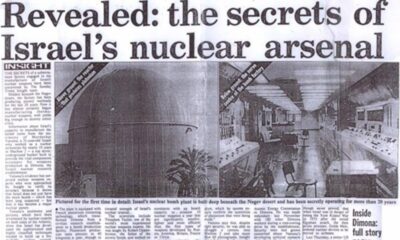
 America2 weeks ago
America2 weeks agoIsrael’s nuclear arsenal used as a tool of blackmail, says expert
-

 Opinion2 weeks ago
Opinion2 weeks agoViewing the Israel-Iran Confrontation Through the Lens of Grand History
-

 America2 weeks ago
America2 weeks agoUS presidents ignore intelligence reports on Iran, says ex-CIA analyst
-
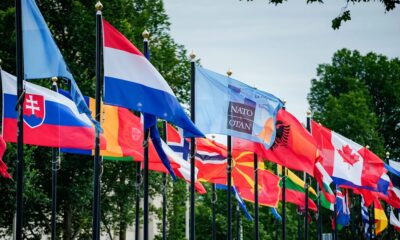
 Diplomacy2 weeks ago
Diplomacy2 weeks agoNATO summit focuses on arms race in the Silicon Valley age
-
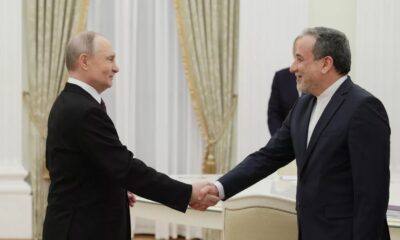
 Diplomacy2 weeks ago
Diplomacy2 weeks agoIranian foreign minister travels to Moscow for Putin talks after US strikes
-

 Europe2 weeks ago
Europe2 weeks agoIsrael-Iran conflict postpones EU plan for Russian oil sanctions
-

 Middle East2 weeks ago
Middle East2 weeks agoUS bombs Iranian nuclear sites, sparking fears of wider conflict
-
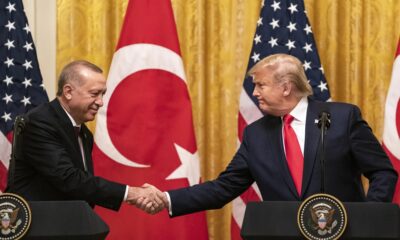
 Diplomacy2 weeks ago
Diplomacy2 weeks agoErdoğan to meet Trump at NATO summit to mend relations


